This blog post was first sent to Jenni’s email list as an email newsletter. Sign up for the JRY email newsletter here!
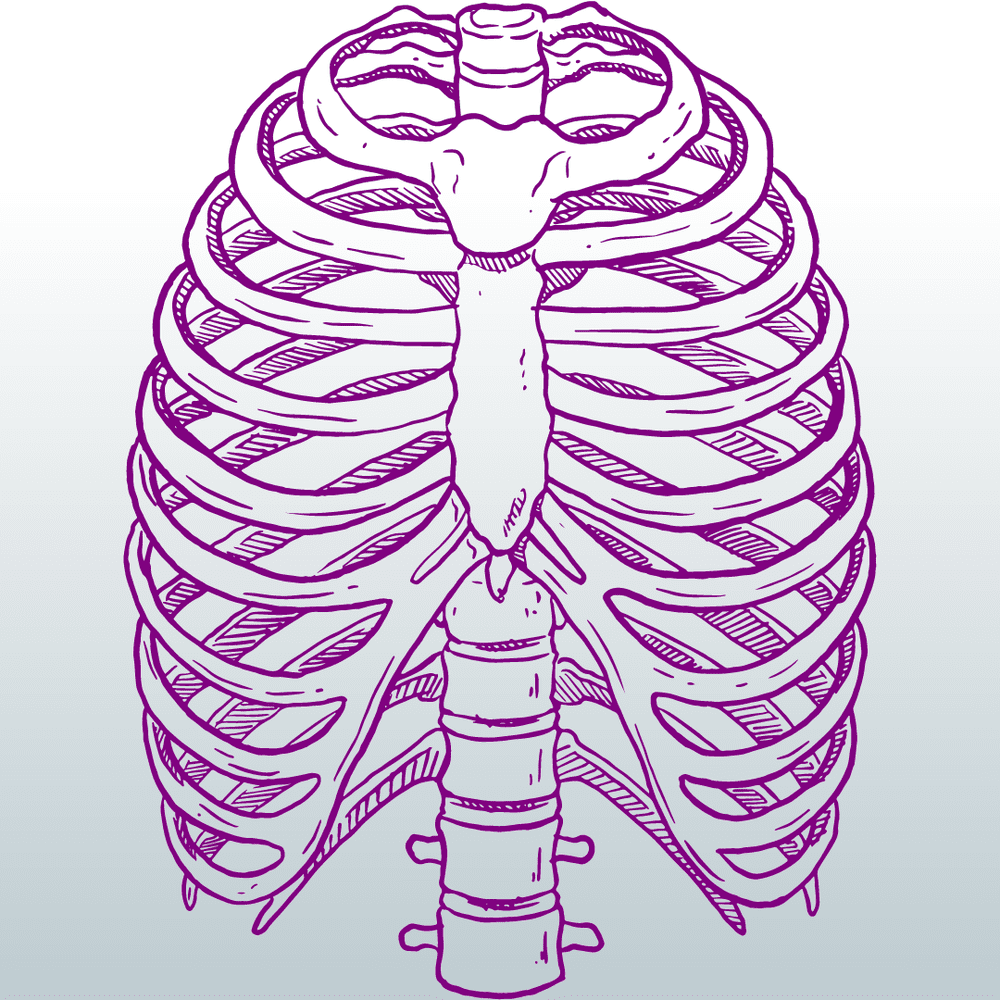
The upper back can be a tricky area to mobilize – did you know?
The upper and mid-back region (a.k.a. the thoracic spine) tends to be a relatively stiff region of the spine.
This is because the 12 vertebrae that live here attach to our 12 pairs of ribs that make up our rib cage.
Our rib cage, in turn, is a literal “cage” that surrounds and contains our heart and lungs.
Our rib cage (and the thoracic spine it’s anchored to) serves to protect these vital organs, and its relative rigidity plays an important role in this function.
And this is why mobilizing our thoracic spine region can be tricky!
This area is on the stiffer side, but it’s bordered on either side by spinal regions that tend to move quite easily: the cervical spine (neck) and the lumbar spine (low back).
Therefore, when we attempt to mobilize the thoracic spine, it’s common for the cervical and/or lumbar spines to jump in and move instead of the targeted thoracic spine movement we’re after.
(Side note: It’s normal for our thoracic spine region to be on the stiffer side, so this isn’t something we need to pathologize. But it can still be beneficial to move the thoracic spine in a targeted way at times!)
And so if upper/mid-back mobilizing is our goal, it can help to integrate strategies that minimize movement at the cervical and lumbar spines.
Here are 5 mobility moves that do just that!
1. Cat/Cow with Resistance Band
We all know and love cat/cow as a spinal warm-up, but this variation takes things up a notch.
Cat/cow with resistance band for mobility
In this version, we add a resistance band to create targeted tactile feedback for the upper back. Anchor the band under your hands and drape it across your mid-back (or wherever you want to focus the movement). The band naturally wants to pull your spine downward into extension. You can let it do that to ease into a gentle upper-back backbend. Then, push your spine up into the band to round your thoracic spine into flexion – moving against the band’s resistance (and engaging your anterior core!).
Instead of moving the whole spine as one big unit, this variation encourages us to isolate the motion more directly in the thoracic region – or whichever spot you decide to place the band!
2. Low Lunge Windmill with Yoga Block at the Wall
This is one of my favorites!
Low Lunge Windmill with Yoga Block at the Wall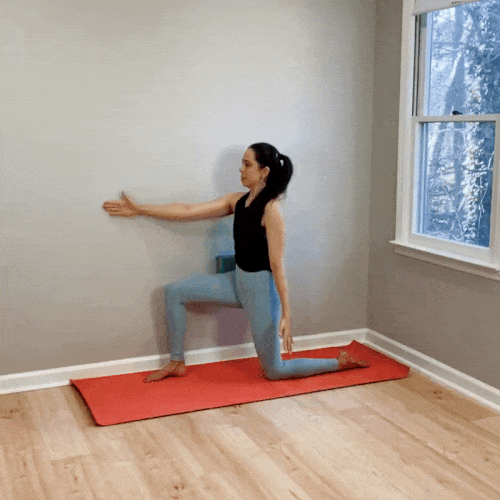
We set up in a low lunge next to a wall. Let’s say the right leg is forward and closest to the wall. We’ll place a yoga block between our right hip and the wall – this block is key, because it prevents our pelvis from rotating, which results in more isolated spinal rotation.
From here, we sweep our right arm forward, up, and back in a big circular motion (like a windmill). As our arm moves, oour spine rotates along with it, eventually twisting toward the wall. But since our pelvis is anchored by the block, we’re able to especially feel the movement in our upper back region. A great way to encourage focused thoracic rotation!
3. Malasana Cat/Cow with Block
Malasana is a great position for mobilizing the upper/mid-back because the deep amount of hip flexion we’re in helps to “lock” the low back in place and minimize movement there.
Malasana cat/cow with yoga block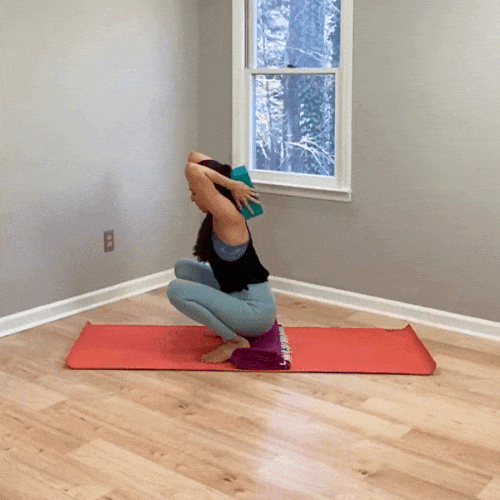
I also placed a yoga block behind my head, positioned so that it touches the back of my head and my shoulders.
The block helps to link my head and upper back together so they move as one connected unit. This means my cervical spine can’t jump in and move in place of the thoracic movement I’m after here! 👍
4. Prone Thoracic Spine Extension with Block
I’m using the yoga block here for the same reason I use it in the malasana cat/cow above.
Prone thoracic spine extension with yoga block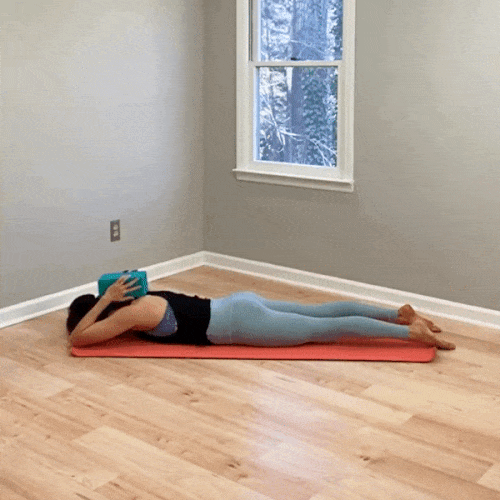
But because I’m fully prone on the floor, my upper/mid-back muscles have to work even harder than they do in the malasana cat/cow in order to lift my chest up against gravity.
This means that this move has more potential to be strengthening for my spinal extensors! (This is one reason why we love this move and include it in many of our Strength for Yoga programs. It’s a potent mobilizer and strengthener at the same time! 💪)
5. Dolphin Press Backs
This one’s a dynamic favorite that’s also very yoga-familiar!
Dolphin press backs for upper back mobility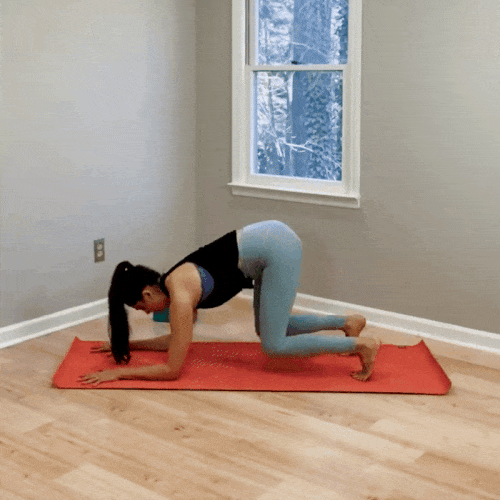
Start with your forearms down on the ground and your knees hovering just above the floor. Keep your forearms planted as you lift your hips and press them back into a dolphin-like shape. Then lower your knees back to the hover, and repeat.
Because your forearms are fixed, your shoulders move into flexion, your scapulas upwardly rotate and protract, and your thoracic spine extends. It’s a super-effective way to get the upper back moving and incorporate a bit of shoulder work too.
Wrap-up
The thoracic spine can sometimes be a little sneaky, letting other parts of the spine jump in and do the work. But when we use smart setup strategies – like blocking movement in the pelvis or neck, or giving ourselves tactile cues – we can target upper back mobility more directly.
Each of these movements gives the thoracic spine a slightly different stimulus – some focus more on flexion and extension, others on rotation, and a few challenge spinal strength at the same time.
Try out these five moves and see which ones help you feel more movement (and maybe more freedom!) in that hard-to-reach upper back zone. They’re all great choices to sprinkle into your movement practice when your upper back could use a little TLC.
Let me know if you have a favorite!
Video Tutorial Featuring 3 of These 5 Upper Back Mobilizing Moves!


